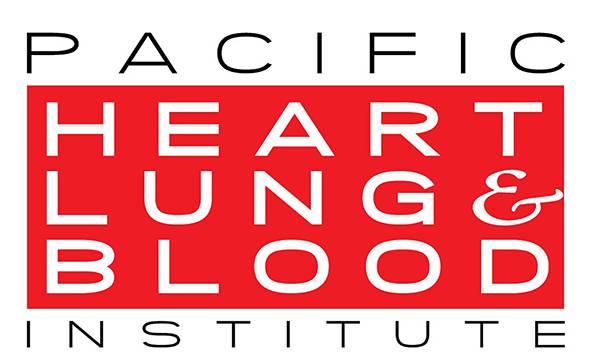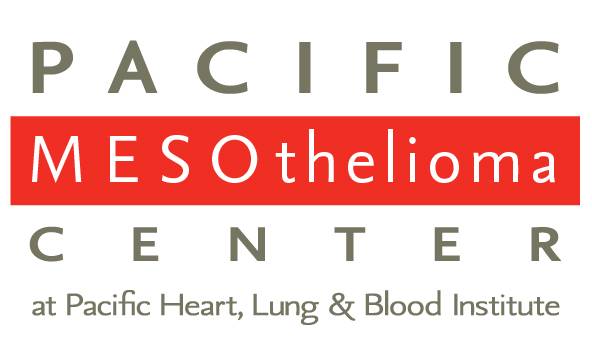HomeDivisionsBlood DisordersTissue Engineering
TISSUE ENGINEERING
From Organ Transplantation to Organ Implantation
What is tissue engineering? The term “tissue engineering” was coined in the mid-1980s by scientists at National Science Foundation (NSF) interested in growing replacement tissues or organs to implant in patients. Comfortable, movable prosthetic arms made from man-made material had been used since the 1960s.
With advances in pharmaceutical drugs to fight tissue rejection and with improvements in surgical techniques, organ transplants had become less risky by the 1980s.
Heart transplants were performed in numerous hospitals across the United States during that era. Tissue engineering, however, was an entirely new interdisciplinary concept based on both engineering and medical science.
This innovative field uses living cells as engineering materials, or building blocks, to grow biological substitutes that repair, replace, restore, or improve the functions of tissues and whole organs inside the body.
Today, tissue engineering focuses not only research on wound healing and cellular prostheses – replacement parts – for the human body.
It also involves regenerative medicine to develop tissues for human disease models for testing new drugs.
In regenerative medicine, premature cells called stem cells – also known as pluripotent cells – are used to create new tissues.
Tissue engineered organ implantation differs from transplantation where an existing organ is taken from either a recently deceased or a living person and then placed in a living patient.
Instead, in tissue engineering a small amount of tissue is harvested from the patient designated to receive the tissue engineered organ. Only a few cells are needed to produce a large enough tissue culture that can be further expanded to create a newly engineered tissue or organ.
The end product – collagen rich neo-tissue – is then implanted back into the patient who originally supplied the starting cells. Implanted tissue that matches a patient’s own DNA and that can replace a cancer- or other disease-afflicted organ would have many advantages over transplants.
If the tissue is grown from the patient’s own stem cells, there would be no risk of tissue rejection as is sometimes the case when transplanting an organ from a donor.
In tissue engineering, four essential components are usually required to produce new tissue that mimics the form and function of the patient’s own tissue.
These components include
- (1) cells,
- (2) a matrix or collagen-containing scaffold,
- (3) biomaterials, and
- (4) a bioreactor.
Stem cells extracted from an embryo, fetus, or adult are frequently utilized in body tissue regeneration although other types of cells may be used.
Stem cells are advantageous because, depending upon where they are placed in the body, they can differentiate into multiple types of cells.
A scaffold is an artificial matrix, or building material, designed to be seeded with stem cells. A scaffold can be a permanent or temporary implantation device.
The structure of the scaffold allows the cells embedded in it to form three-dimensional tissue that retains its shape as the cells multiply and the tissue expands.
After implantation, a permanent scaffold remains in the body, but a temporary scaffold biodegrades after the embedded cells migrate to the site of injured tissue.
Biomaterials such as cytokines – small cell-signaling protein molecules – bind to specific receptors on the surface of immune cells and then guide communication between cells.
Some cytokines trigger specific activity that causes cells to proliferate.
A bioreactor is a device, often cylindrical in shape, with its own micro-environment used to grow cells or tissues.
In tissue engineering, a scaffold seeded with living cells and chemicals such as cytokines is placed in the bioreactor.
A cocktail of various biochemicals is added to the bioreactor to create a physiological environment promoting cell growth. The selection of the biochemicals is based upon the desired tissue or organ.
The cells multiply and, depending upon the micro-environment created by the combination of biochemicals, turn into an appropriate shape needed for the target tissue and organs.
The scaffold is then implanted in the patient, allowing the cells inside of it to proliferate and differentiate.
Once the embedded cells are implanted, the patient’s own cytokines make contact with the implanted cells.
As new cell-to-cell interactions occur, the cells continue to grow and turn into the target tissue.
The implanted cells and tissue eventually start functioning on their own in their new host’s environment: inside the body of the stem cell donor.
Several tissue engineered artificial tissues or organs have been successfully created in the laboratory, and some have even been implanted in humans.
Scientists have made artificial bone marrow, bone, pancreas, and blood vessels from stem cells.
Tissue engineered bladders have been experimentally implanted into human patients. Growth factors to promote wound healing and artificial skin, such as cell-free substances or collagen-elastin matrix grafted onto skin after hand burns, are already on the market.
Cell-containing skin substitutes – cultured epidermal autografts – are also available to repair deep dermal or full thickness burns covering thirty percent or more of the total body surface area.
Preliminary research suggests that blood cells from stem cells may be useful for making synthetic or artificial blood.
Not all organs are good candidates for tissue engineering, however. Engineered lung tissue is unlikely to function better than donor tissue as a treatment for multiple types of lung disease.
Nevertheless, regenerative medicine may yield innovative cell therapies for repairing damaged lung tissue in several lung diseases.
Even when suitable tissues are created for implantation, the tissues need blood vessels that can connect with the patient’s own blood supply.
Developing tissue engineered blood vessels is one of the most challenging obstacles facing researchers today in regenerative medicine.
Notable progress has been made, however. A research team in the United States recently developed 3-D liver tissues – complete with their own network of blood vessels – by surrounding a 3-D network of sugar molecules with liver cells.
Exciting advances also have been seen in the field of wound healing for injured arteries. Scientists implanted scaffolds embedded with endothelial cells – a thin layer of cells lining the inner surface of blood vessels – around injured arteries.
The newly grown endothelial cells secreted numerous proteins that helped to repair injury to the arteries and to control the growth of normal blood vessels.
Tissue engineering may be a promising, next-generation prospect for the more than 2,000 patients in the United States who need a heart transplant each year.
In the future, tissue engineering and regenerative therapy of myocardium – muscular tissue of the heart – may become viable treatment options for patients with end-stage heart failure.
With new scaffold designs, engineered cells perhaps will be efficiently delivered to damaged areas of the heart.
Some researchers are using engineered cell sheets instead of scaffolds to build new heart tissue and to repair weak heart tissue.
Important steps have been taken toward bioengineering small vessels and cardiac tissue repair.
By adding a patented a synthetic substance, Austrian scientists converted embryonic and adult stem cells from mice into heart cells that started beating in a petri dish.
Tissue engineered hearts for human use are far from present-day reality.
With discoveries of new chemicals that can turn stem cells into cardiac cells, however, bioartificial heart cells nurtured in a test tube may some day be transformed into fully functional human hearts ready for implantation in patients with severe heart failure and other cardiac diseases.
Borrowing from innovative breakthroughs in engineering, some researchers are employing 3-D printers in experimental regenerative medicine.
A research team in Scotland has used 3-D printers to meticulously lay down embryonic stem cells arranged as tiny spheres.
The spheres were assembled to build human tissue models for test tube studies on the toxicity and effectiveness of potential drugs.
In less than 40 years since its birth, the cutting edge, hybrid technology of cell biology and engineering – tissue engineering – has ushered in one of the most ground-breaking evolutionary advances of twenty-first century medicine.
As scientists come to better understand how stem cells are converted into various classes of cells, they will be able to engineer specific types of cells that grow into target tissues, and in some cases into whole organs.
Tissues and organs created specifically for implantation eventually may become a practical therapy that not only extends the length of patients’ lives, but also dramatically improves their quality of life.
References
American Heart Association. Adult stem cells from liposuction used to create blood vessels in the lab. ScienceDaily. July 25, 2012.
Berthiaume F, Maguire TJ, Yarmush ML. Tissue engineering and regenerative medicine: history, progress, and challenges. Annu Rev Chem Biomol Eng. 2011;2:403-30.
Elena A. Armandola EA. Tissue Regeneration and Organ Repair: Science or Science Fiction? Medscape General Medicine. 2003;5(3)
Finosh GT, Jayabalan M. Regenerative therapy and tissue engineering for the treatment of end-stage cardiac failure: New developments and challenges. Biomatter. 2012 Jan 1;2(1):1-14.
Kubo H.Concise review: clinical prospects for treating chronic obstructive pulmonary disease with regenerative approaches. Stem Cells Transl Med. 2012 Aug;1(8):627-31.
Matsuura K, Okano T. Cell sheet transplantation for heart tissue repair. J Control Release. 2013 Mar 14. pii: S0168-3659(13)00138-7.
Service RA. Artificial Blood Vessels Prove Effective. Science Now. April 24, 2009.
http://news.sciencemag.org/sciencenow/2009/04/24-02.html
Staedter T. Heart Cells Beat in Lab Dish. Discovery News. Mar 5, 2013
Trafton A. Tissue engineering: Growing new organs, and more. MIT News Office.
Dec 14, 2012.
http://web.mit.edu/newsoffice/2012/engineering-health-tissue-engineering-growing-organs-1214.html?tmpl=component&print=1
van Winterswijk PJ, Nout E. Tissue engineering and wound healing: an overview of the past, present, and future. Wounds. 2007;19(10):277-284. http://www.medscape.com/viewarticle/566133_2





